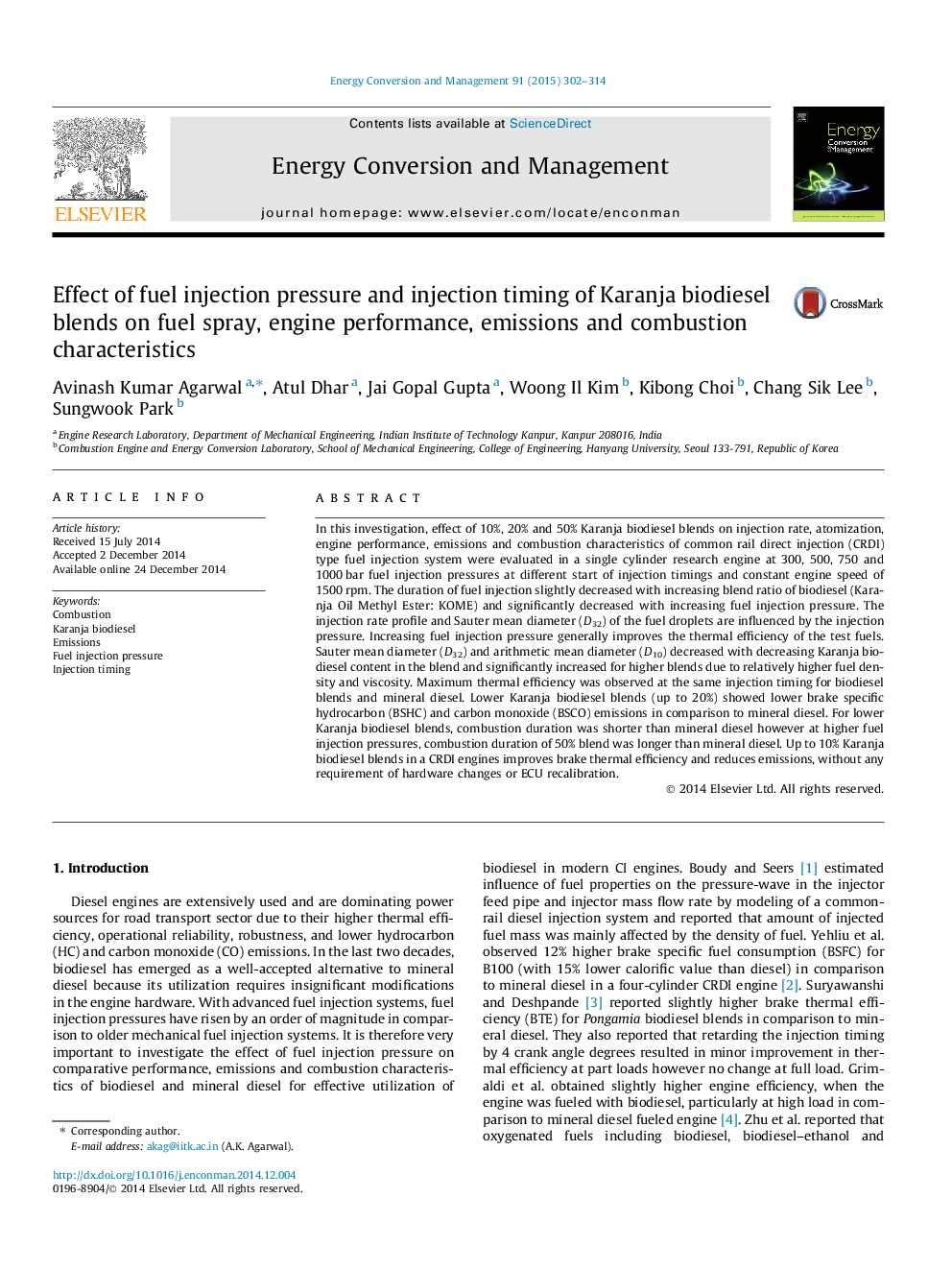| کد مقاله | کد نشریه | سال انتشار | مقاله انگلیسی | نسخه تمام متن |
|---|---|---|---|---|
| 763942 | 1462871 | 2015 | 13 صفحه PDF | دانلود رایگان |
• Effect of FIP on microscopic spray characteristics.
• Effect of FIP and SOI timing on CRDI engine performance, emissions & combustion.
• Fuel injection duration shortened, peak injection rate increased with increasing FIP.
• SMD (D32) and AMD (D10) of fuel droplets decreased for lower biodiesel blends.
• Increase in biodiesel blend ratio and FIP, fuel injection duration decreased.
In this investigation, effect of 10%, 20% and 50% Karanja biodiesel blends on injection rate, atomization, engine performance, emissions and combustion characteristics of common rail direct injection (CRDI) type fuel injection system were evaluated in a single cylinder research engine at 300, 500, 750 and 1000 bar fuel injection pressures at different start of injection timings and constant engine speed of 1500 rpm. The duration of fuel injection slightly decreased with increasing blend ratio of biodiesel (Karanja Oil Methyl Ester: KOME) and significantly decreased with increasing fuel injection pressure. The injection rate profile and Sauter mean diameter (D32) of the fuel droplets are influenced by the injection pressure. Increasing fuel injection pressure generally improves the thermal efficiency of the test fuels. Sauter mean diameter (D32) and arithmetic mean diameter (D10) decreased with decreasing Karanja biodiesel content in the blend and significantly increased for higher blends due to relatively higher fuel density and viscosity. Maximum thermal efficiency was observed at the same injection timing for biodiesel blends and mineral diesel. Lower Karanja biodiesel blends (up to 20%) showed lower brake specific hydrocarbon (BSHC) and carbon monoxide (BSCO) emissions in comparison to mineral diesel. For lower Karanja biodiesel blends, combustion duration was shorter than mineral diesel however at higher fuel injection pressures, combustion duration of 50% blend was longer than mineral diesel. Up to 10% Karanja biodiesel blends in a CRDI engines improves brake thermal efficiency and reduces emissions, without any requirement of hardware changes or ECU recalibration.
Journal: Energy Conversion and Management - Volume 91, February 2015, Pages 302–314
